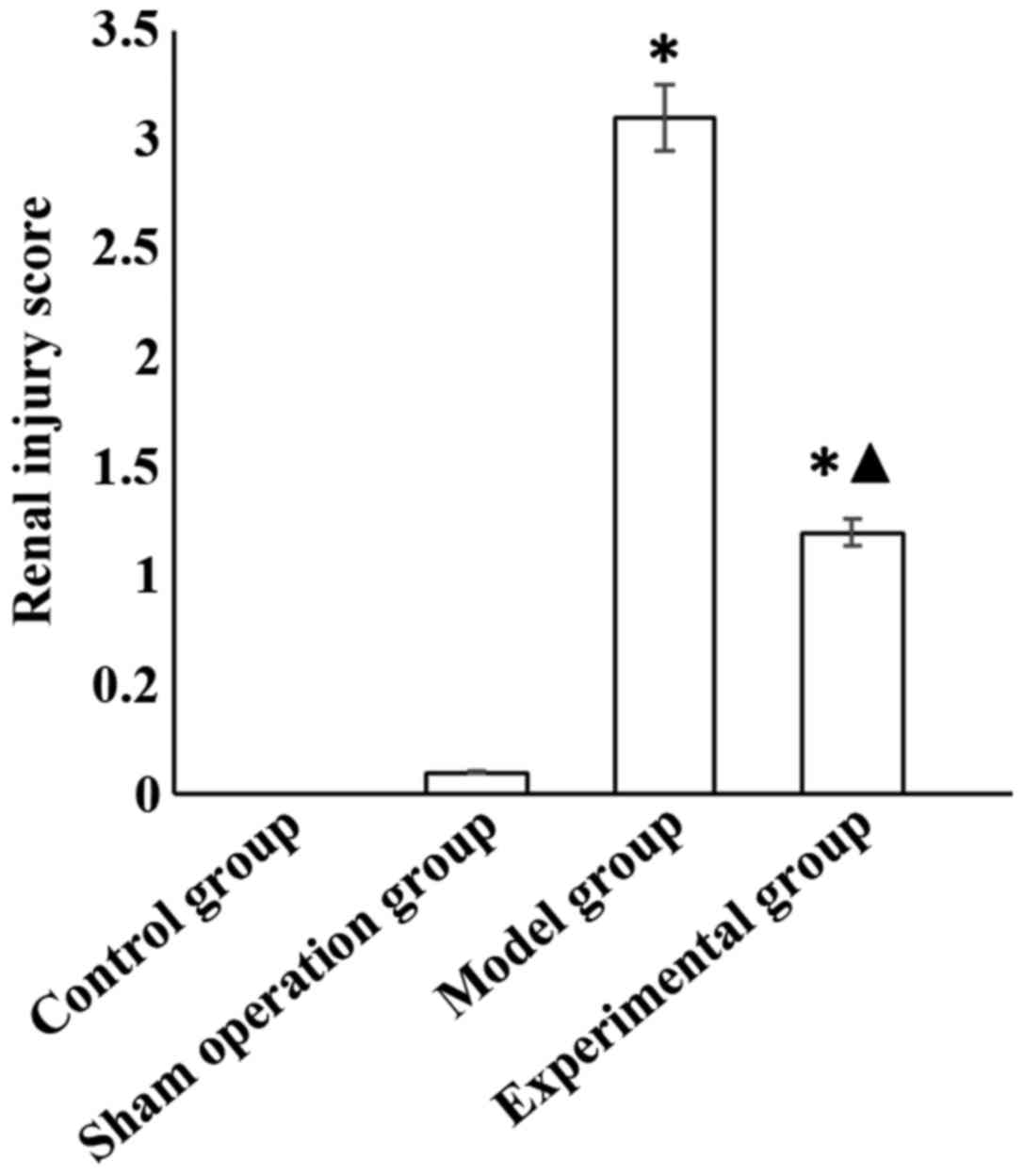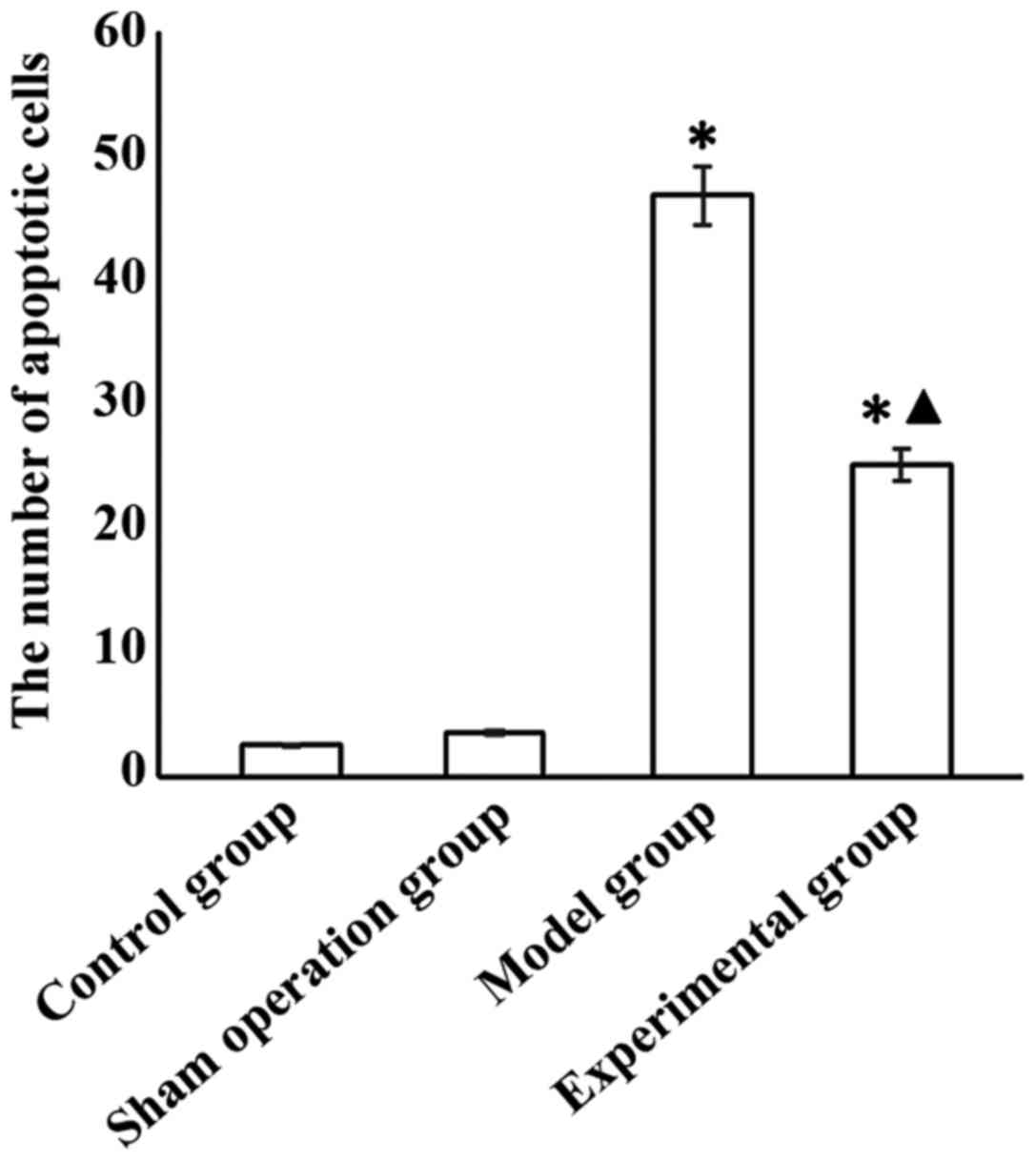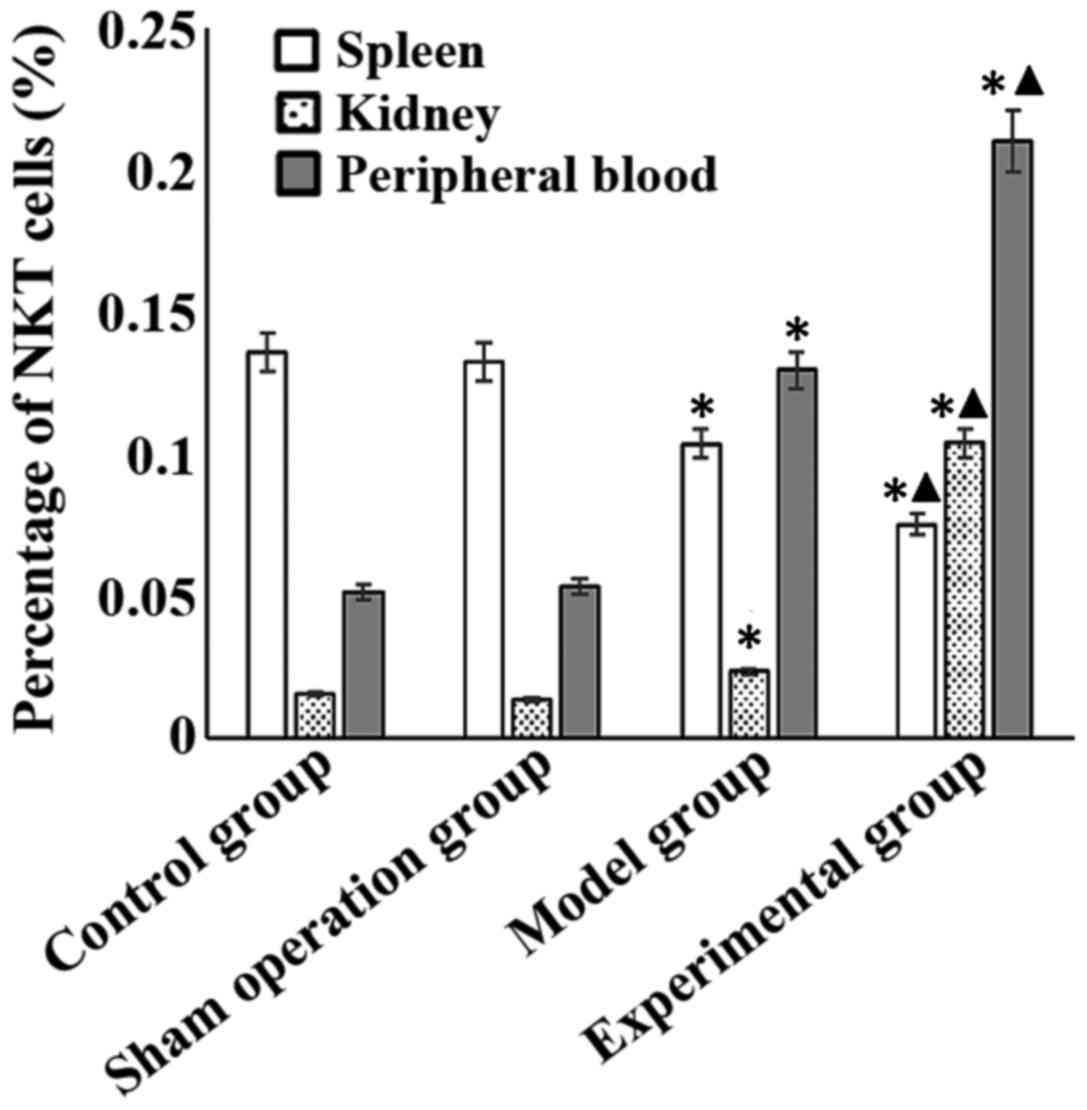|
1
|
Zandstra J, van Beuge MM, Zuidema J,
Petersen AH, Staal M, Duque LF, Rodriguez S, Lathuile AA, Veldhuis
GJ, Steendam R, et al: Microsphere-based rapamycin delivery,
systemic versus local administration in a rat model of renal
ischemia/reperfusion injury. Pharm Res. 32:3238–3247. 2015.
View Article : Google Scholar : PubMed/NCBI
|
|
2
|
Malek M and Nematbakhsh M: Renal
ischemia/reperfusion injury; from pathophysiology to treatment. J
Renal Inj Prev. 4:20–27. 2015.PubMed/NCBI
|
|
3
|
Kezić A, Stajic N and Thaiss F: Innate
immune response in kidney ischemia/reperfusion injury: Potential
target for therapy. J Immunol Res. 2017:63054392017. View Article : Google Scholar : PubMed/NCBI
|
|
4
|
Zhu J, Lu T, Yue S, Shen X, Gao F,
Busuttil RW, Kupiec-Weglinski JW, Xia Q and Zhai Y: Rapamycin
protection of livers from ischemia and reperfusion injury is
dependent on both autophagy induction and mammalian target of
rapamycin complex 2-Akt activation. Transplantation. 99:48–55.
2015. View Article : Google Scholar : PubMed/NCBI
|
|
5
|
Feldman ME, Apsel B, Uotila A, Loewith R,
Knight ZA, Ruggero D and Shokat KM: Active-site inhibitors of mTOR
target rapamycin-resistant outputs of mTORC1 and mTORC2. PLoS Biol.
7:e382009. View Article : Google Scholar : PubMed/NCBI
|
|
6
|
Livak KJ and Schmittgen TD: Analysis of
relative gene expression data using realtime quantitative PCR and
the 2(-Delta Delta C(T)) method. Methods. 25:402–408. 2001.
View Article : Google Scholar : PubMed/NCBI
|
|
7
|
Guan X, Qian Y, Shen Y, Zhang L, Du Y, Dai
H, Qian J and Yan Y: Autophagy protects renal tubular cells against
ischemia/reperfusion injury in a time-dependent manner. Cell
Physiol Biochem. 36:285–298. 2015. View Article : Google Scholar : PubMed/NCBI
|
|
8
|
Khan S, Salloum F, Das A, Xi L, Vetrovec
GW and Kukreja RC: Rapamycin confers preconditioning-like
protection against ischemia-reperfusion injury in isolated mouse
heart and cardiomyocytes. J Mol Cell Cardiol. 41:256–264. 2006.
View Article : Google Scholar : PubMed/NCBI
|
|
9
|
Lui SL, Chan KW, Tsang R, Yung S, Lai KN
and Chan TM: Effect of rapamycin on renal ischemia-reperfusion
injury in mice. Transpl Int. 19:834–839. 2006. View Article : Google Scholar : PubMed/NCBI
|
|
10
|
Connell BJ, Gordon JR and Saleh TM:
ELR-CXC chemokine antagonism is neuroprotective in a rat model of
ischemic stroke. Neurosci Lett. 606:117–122. 2015. View Article : Google Scholar : PubMed/NCBI
|
|
11
|
Baroja-Mazo A, Revilla-Nuin B, Ramírez P
and Pons JA: Immunosuppressive potency of mechanistic target of
rapamycin inhibitors in solid-organ transplantation. World J
Transplant. 6:183–192. 2016. View Article : Google Scholar : PubMed/NCBI
|
|
12
|
Zhang Y, He S, Du X, Jiang Y, Tian B and
Xu S: Rapamycin suppresses hypoxia/reoxygenation-induced islet
injury by up-regulation of miR-21 via PI3K/Akt signalling pathway.
Cell Prolif. 50:1–8. 2017. View Article : Google Scholar
|
|
13
|
Zimmerman MA, Martin A, Yee J, Schiller J
and Hong JC: Natural killer T cells in liver ischemia-reperfusion
injury. J Clin Med. 6:412017. View Article : Google Scholar
|
|
14
|
Hagen T: Oxygen versus reactive oxygen in
the regulation of HIF-1α: The balance tips. Biochem Res Int.
2012:4369812012. View Article : Google Scholar : PubMed/NCBI
|
|
15
|
Coothankandaswamy V, Liu Y, Mao SC, Morgan
JB, Mahdi F, Jekabsons MB, Nagle DG and Zhou YD: The alternative
medicine pawpaw and its acetogenin constituents suppress tumor
angiogenesis via the HIF-1/VEGF pathway. J Nat Prod. 73:956–961.
2010. View Article : Google Scholar : PubMed/NCBI
|
|
16
|
Javedan G, Shidfar F, Davoodi SH, Ajami M,
Gorjipour F, Sureda A, Nabavi SM, Daglia M and Pazoki-Toroudi H:
Conjugated linoleic acid rat pretreatment reduces renal damage in
ischemia/reperfusion injury: Unraveling antiapoptotic mechanisms
and regulation of phosphorylated mammalian target of rapamycin. Mol
Nutr Food Res. 60:2665–2677. 2016. View Article : Google Scholar : PubMed/NCBI
|

















